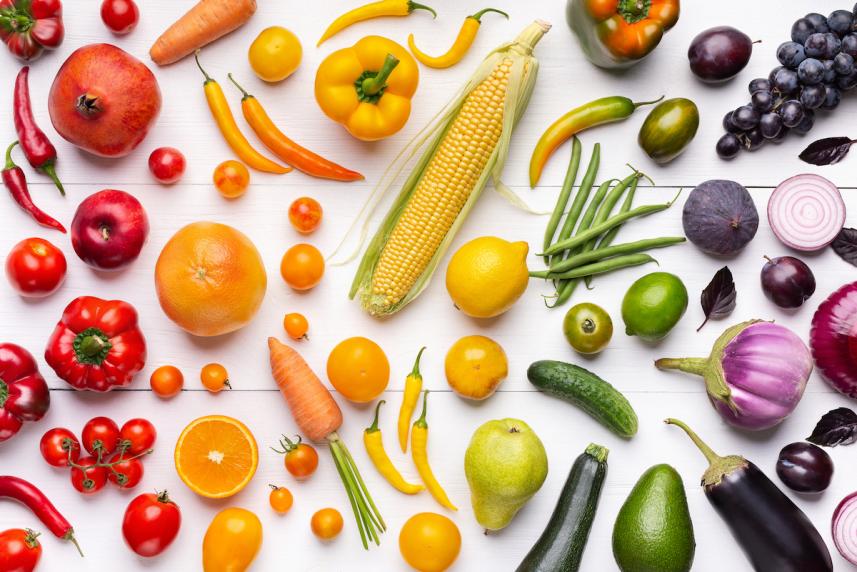Five ways to eat less meat
Even if you don't go totally vegetarian, cutting back on meat can help improve your health.

It's no secret that we're a nation made up of steak lovers, hot dog eaters, and fried chicken consumers. On average, Americans eat 270.7 pounds of meat per person annually—more than twice the global average. "Though meat consumption in the U.S. has dropped off slightly in recent years, we still eat more meat per person here than in almost any other country on the planet," says Katherine Brooking, MS, RD, and Julie Upton, MS, RD, authors of The Real Skinny: Appetite for Health’s 101 Fat Habits and Slim Solutions.
A high animal protein diet can lead to health risks, because meat-rich diets are higher in saturated fat than plant-based diets. Eating large amounts of saturated fats raises the risk for diabetes, stroke, and other cardiovascular diseases. "While moderate meat eating will not lead to obesity, a 'fast food' lifestyle of burgers and the accompanying fries and sodas can easily lead to weight gain," Brooking and Upton say. "Recent research, particularly studies on the Mediterranean Diet, which emphasizes less meat and more produce, whole grains, and healthy fats or oils, points toward better health outcomes." But if we're a nation of meat eaters, how likely is it that we'll change our ways and start playing for the produce-friendly team?
As opposed to going cold turkey (literally), Upton and Brooking suggest using approachable steps for long-term diet success and a healthier lifestyle. "Making a small change in behavior, like eating more vegetables each day, can be a good way to start making larger changes over time. Once a 'small change' is mastered, [you'll] feel confident about making more healthy changes," Upton and Brooking say. Try these simple tips to start eating less meat and getting moving on the path to a slimmer, healthier you.
1. Pump up the produce
"On average, Americans are not consuming nearly enough produce. In fact, the latest stats show most Americans aren't eating even half of the daily recommended servings of produce. At the same time, Americans tend to overconsume less nutritious, high-calorie foods," Upton and Brooking say. That's too bad, considering that a produce-based diet can help lower disease risk factors for cancer, heart disease, and diabetes.
With each meal, including snacks, focus on including at least one vegetable or fruit. Replace chips and fries with sliced cucumbers or carrots when pairing with dips, or consider using seasonings and hot sauce to sauté or roast vegetables at dinner.
2. Try new veggie dishes
For simple, filling lunch and dinner options, Upton and Brooking suggest making lentil and bean soup (swap vegetable broth for the beef!), an asparagus and avocado wrap, shrimp and veggie stir-fry, or a veggie omelet.
3. Go meatless on Mondays
Choose one day a week to skip the meat. "Instead of meat-based meals, there are thousands of delicious meatless recipes from which to choose. We think that the real key to cutting down is to find tasty dishes to substitute for meat-based ones," the authors say. Once you feel comfortable, add another day of meatless eats.
4. Expand your protein options
One of the biggest obstacles to eating less meat is the misconception that meat is the only source of protein available. There are tons of plant-based protein sources out there, including beans, whole grains, dairy, nuts, and soy.
Plus, there's a lot of protein swimming in the ocean. "While fish and seafood might technically be meats, they don't carry the same risks as red meat," Brooking and Upton say. So, if you're not quite ready to build a meal around tofu or legumes, try a nice piece of heart-healthy fish like salmon. Maybe a BBQ-baked salmon?
5. Find a better beef
If you crave red meat, Brooking and Upton suggest trying fish and seafood, soy-based foods, and leaner proteins like poultry as alternatives. But sometimes, you just need a steak. If you must have red meat, opt for smaller portions (3-4 oz) of lean cuts like sirloin tip, top round roast, and eye of round roast they say.


